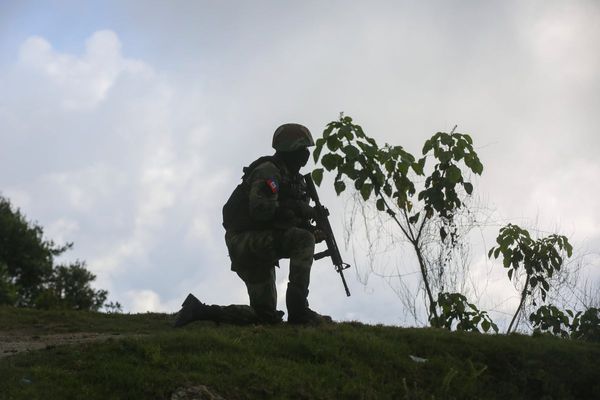"The Bald Eagle: The Improbable Journey of America’s Bird " by Jack E. Davis; Liveright (432 pages, $29.99)
———
Naturalist William Bartram called it “an execrable tyrant: he supports his assumed dignity and grandeur by rapine and violence.” Benjamin Franklin judged it to be “a bird of bad moral character” who “does not get his living honestly.” And John James Audubon (who knew something about killing birds) called it “the dreaded enemy of the feathered race.”
What is this villain on wings? The bald eagle, America’s national bird.
Whoops, no. Officially, we have no national bird. That’s just the first of the myths busted in Jack E. Davis’ splendid new book, "The Bald Eagle: The Improbable Journey of America’s Bird." Davis, a professor of environmental history at the University of Florida, won the Pulitzer Prize in 2018 for his last book, "The Gulf: The Making of an American Sea."
Both that book and this one are histories at once sweeping and detailed, focused on a single subject but using it to tell a much broader story, in this case the relationship of the bird to the history and culture of the American people.
Davis begins with the bald eagle’s image on the Great Seal of the United States, a design so contentious it took some five years to win approval from the Founding Fathers — much longer than the first Stars and Stripes.
The image of a bald eagle “with a shield on its chest, arrows and olive branches in its talons, and an ‘E pluribus unum’ scroll unfurled and clenched in its beak” has become so ubiquitous on our money, in military insignia, even in advertising that it seems like a natural phenomenon, but no.
Davis debunks another myth related to the seal: Franklin’s supposed opposition to the eagle in favor of another American bird, the turkey. Franklin didn’t care for eagles, but when he suggested putting the turkey on the Great Seal it was very probably a joke.
The bald eagle — which of course is not bald but as a mature bird has a head and neck covered with snow-white feathers — had its image on the Great Seal, but its reputation was still decidedly mixed. Among Indigenous people, the eagle was often considered a representative of the spiritual world and a symbol of courage and wisdom. Its feathers were potent sacred objects.
As the U.S. expanded its states and territories across the continent, European Americans developed different opinions. To farmers’ dismay, the balds were as happy to dine on their chickens as on wild prey. Hunters and anglers learned that eagles were adept at scooping away the duck they had just shot or the fat fish on their line.
The claims about bald eagle depredations tended to be exaggerated, sometimes wildly. Ranchers claimed the raptors carried off calves and sheep, and there were even tales of them snatching up human babies.
Davis points out that, majestic as it looks, a full-grown bald eagle weighs only about 14 pounds. “As powerful and exquisitely designed as the eagle’s wings are,” he writes, “they have limits to what they can lift. At best — at best — their cargo capacity is five pounds, and that capacity can be reached only if an eagle takes its prey in continuous flight with momentum behind it.”
A newborn calf, he points out, weighs about 50 pounds. But myths, however ridiculous, have power, and bald eagles suffered the same fate as so many other apex predators: They were slaughtered by the thousands to protect domestic animals. All manner of methods were used: setting out poison bait, chopping down the trees they nested in, even, in the 20th century, shooting them from airplanes.
Unpopular in the aggregate, bald eagles could still be beloved as individuals, especially in symbolic roles. Davis recounts the life of Old Abe, a bald eagle who was raised by humans and went into battle on a custom-made perch at the head of the Eighth Regiment of the Union Army during the Civil War.
Old Abe survived Confederate attempts to cut him down at the battles of Corinth and Vicksburg, among others. After the war, he became the subject of at least eight biographies and lived for another 17 years in a specially built enclosure in Wisconsin’s state capitol building, making appearances far and wide, often to raise money for veterans’ organizations. Davis writes that “you could buy a photograph of Old Abe, who would sign it by piercing a hole in the picture with his yellow beak.”
Despite Old Abe’s charisma, by the beginning of the 20th century the bald eagle population in the U.S. was plummeting because of hunting and bounties as well as habitat loss; in some states they were nearly extinct.
Davis uses their plight, and their rescue, to recount the history of the American environmental movement. By the mid-20th century the efforts of thousands of people had brought the bald eagles back — only to see them (and countless other birds) devastated by the effects of the pesticide DDT, as revealed in Rachel Carson’s 1962 book "Silent Spring."
A second rescue round, using a technique called “hacking” (the term borrowed from falconry, not computer crime), is described in engaging detail, as dedicated volunteers climb to dizzying heights to carefully remove eaglets from their huge nests and bring them to facilities where they’re raised until big enough to be released to repopulate areas where eagles are sparse.
Davis writes engagingly, too, about the bald eagles’ “family values.” They mate for life, returning year after year to the same nest, like one legendary one near Vermilion, Ohio, called the Great Eyrie.
First seen at the top of a hickory tree in 1890, by 1922 it was 12 feet tall and more than 8 feet wide across its top and weighed approximately 2 tons. A biology professor name Francis Herrick built an observation platform near it and became one of the first humans to study an active eagle’s nest close up, until a squall took tree and nest down in 1925.
These are just a handful of the fascinating details about bald eagles that Davis packs into this expansive book. He’s a meticulous historian and researcher as well as a master storyteller — an irresistible combination.
Davis, who has spent a lot of time in Pinellas County, brings it back home. He tells the story of Patrick Bradley, a Green Beret and Vietnam combat veteran who returned from war only to struggle with the effects of its trauma. He spent three years in the Canadian wilderness working on a bald eagle research project, and later, in 2010, took as job running the raptor program at Boyd Hill Nature Preserve in St. Petersburg.
When his son returned from military service in Iraq struggling as his father had done years before, Bradley “put a red-tailed hawk on Skyler’s gloved arm and had him stroll the preserve’s three miles of trail winding through heavily canopied hardwoods.”
Soon he was sending other vets out with “birds on their arms.” At a raptor rehab program at McGough Nature Park in Largo, Bradley and one of those veterans, a Native American named Telia Hann, formed a bond with a bald eagle named Sarge.
Captive bald eagles can be reserved with people, but the relationship between Sarge and Hann made the bird so receptive she became the ambassador for the growing Avian Veteran Alliance program, Davis writes.
“More than two thousand vets had walked with raptors at the park by 2020.”







